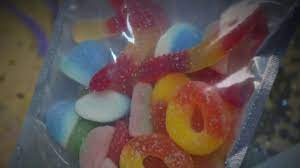According to a study published Tuesday in the journal Pediatrics, more young children are becoming ill as a result of inadvertently eating marijuana edibles.
According to the study, calls to poison control centres about children aged 5 and under consuming THC-containing edibles increased from 207 in 2017 to 3,054 in 2021, a 1,375% increase. The psychoactive ingredient in marijuana is THC, or tetrahydrocannabinol.
Almost all of the children — 97% — discovered the edibles at home.
The findings were based on over 7,000 paediatric poisoning cases reported to the National Poison Data System, a database that tracks poisoning reports.
According to Dr. Antonia Nemanich, an assistant professor of emergency medicine and toxicology at Rush University Medical Center in Chicago, the increase was most likely driven by the combination of more states legalising recreational marijuana and the coronavirus pandemic, which meant more children stayed at home.
Edibles are frequently packaged to look like candy or cookies, and children, unaware of the dangers they pose, can consume several in a single sitting, according to Nemanich.
“They don’t know what it is, and they don’t know when to stop,” she explained.
According to the study, slightly more than half of the reports concerned 2- and 3-year-olds, followed by 4-year-olds (18%), 1-year-olds (15%), and 5-year-olds (13%). Infants made up 1.9% of all calls.
According to experts, eating too much can cause serious health problems in young children, such as confusion, hallucinations, a rapid heart rate, and vomiting. In severe cases, children may experience breathing difficulties or even comas. The severity is usually determined by the size and age of the child, as well as the amount of cannabis consumed.
“It can be very concerning for the doctors who are treating them,” Nemanich said.
According to the study, nearly a quarter of the children were admitted to the hospital, with 8.1% requiring intensive care. There were no reported deaths.
Dr. Sam Wang, an emergency medicine physician and paediatrician at Children’s Hospital Colorado, said the study is consistent with what he sees in his hospital.







